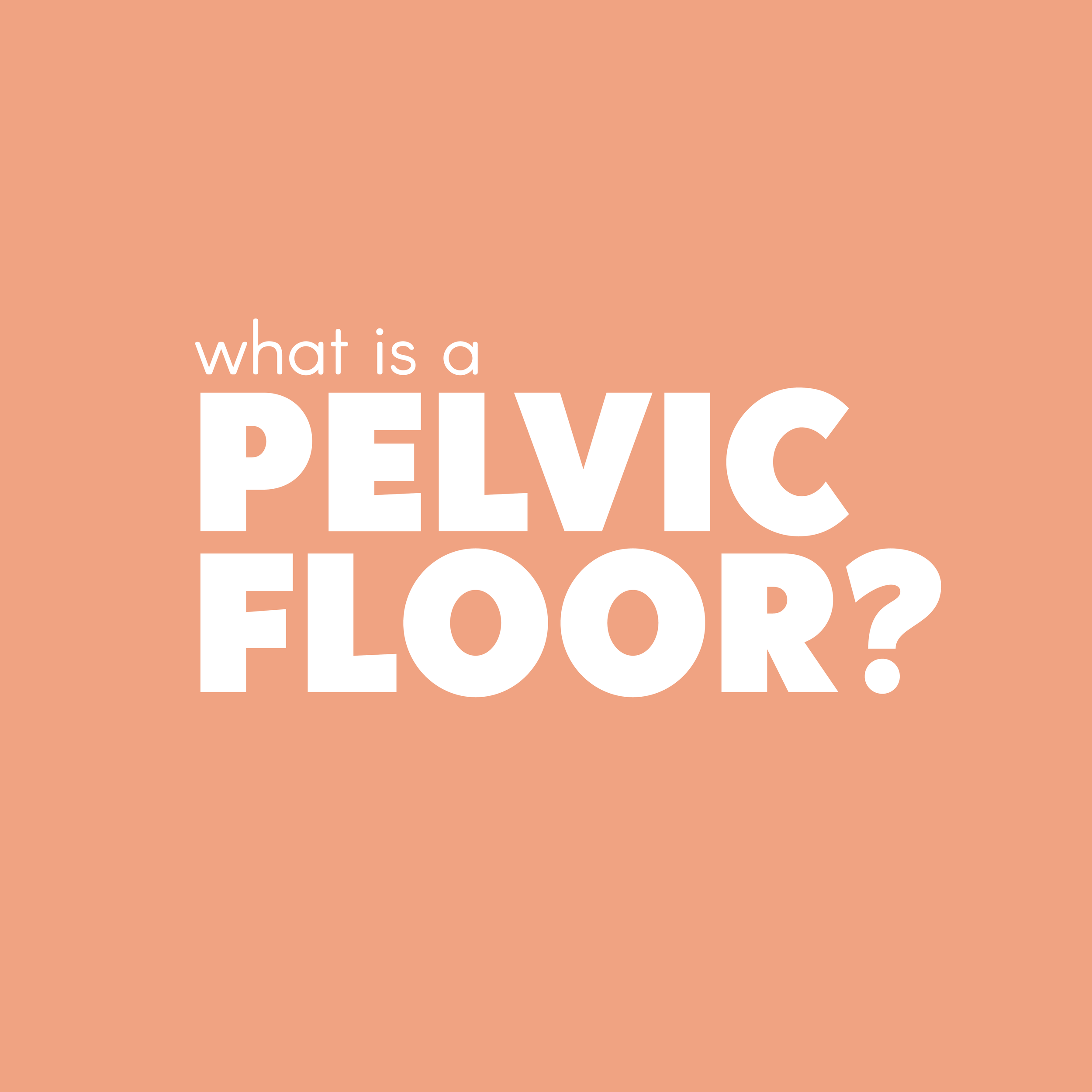
Maintaining Healthy Habits This Festive Season: A Pelvic Floor Physiotherapist’s Guide
Support your pelvic health this festive season with expert tips from a pelvic floor physiotherapist. Learn how to manage bladder irritants, prevent constipation, reduce leakage, and stay consistent with pelvic floor exercises over the holidays.

Why Pelvic Floor Relaxation Matters During Labour
Learn why pelvic floor relaxation is essential during labour and how a pelvic health physiotherapist can help you prepare for an easier, safer birth. Discover the benefits of releasing pelvic floor tension, improving the pushing phase, and reducing the risk of tearing or interventions. Perfect for pregnancy and birth preparation.

Medical Grade vs Non-Medical Grade Compression: Innovation in incontinence and prolapse support
Compression garments have become increasingly popular among pregnant and postpartum individuals to support the body through its incredible changes. But not all compression is created equal. In our pelvic health physiotherapy clinic, we often get asked: "Do I need medical-grade compression?" or "Why is there such a price difference between some maternity and postpartum support products?"

returning to running after having a baby
Returning to exercise after pregnancy can feel daunting — physically, mentally, and emotionally. In this guest blog, Melbourne podiatrist, run coach and mum of two Sophie Fitt, founder of SheFitt Run Coaching, shares expert advice on how to safely and confidently return to running after childbirth. Learn why seeing a pelvic health physiotherapist is essential before high-impact exercise, how to start with gentle movement, and the step-by-step structure of the SheFitt Postpartum Return to Run Program. Discover a compassionate, realistic approach to rebuilding fitness, confidence, and joy in movement — at your own pace.

The Benefits of Compression Socks in Minimising the Risk of DVT’s in Pregnancy
Pregnancy naturally increases the risk of deep vein thrombosis (DVT) due to hormonal changes, increased blood volume, and reduced mobility. Graduated compression socks are a safe, effective way to improve circulation, reduce swelling, and support leg health during pregnancy and the postpartum period. Learn how compression wear can help minimise DVT risk, when to use it, and what to look for when choosing the right maternity compression socks.

Supporting Breastfeeding and bottle feeding (and Your Pelvic Floor): A Pelvic-Floor Physio’s Perspective
Breastfeeding and bottle feeding is a beautiful part of motherhood—but it can also be physically repetitive and demanding on your body, particularly on your mid- back, abdominal and pelvic floor muscles early in your recovery from birth. This can be further exacerbated by poor posture which places additional strain on your neck, lower back and pelvis.

Pelvic Girdle Pain in Pregnancy: What It Is & How a pelvic Belt Can Help
Pregnancy brings incredible changes—but it can also come with some physical challenges. One of the most common is Pelvic Girdle Pain (PGP). If you’re experiencing discomfort around your pelvis, you’re not alone—and you don’t have to suffer through it.

Embrace Physio + Pilates Expands to Caulfield South: Now Offering Pelvic Floor Physio Closer to Bayside
From September 2025, we’ll be welcoming clients to a brand-new clinic space in Caulfield South. Our new location will be operating out of purpose-built allied health suites located adjacent to Caulfield South Family Medical Clinic. This new facility has been thoughtfully designed to support your complete pelvic health journey — from pregnancy to postpartum and beyond.

Returning to Exercise Postpartum: Why a Pelvic Floor Physiotherapy Assessment Matters
Thinking about returning to exercise after pregnancy? Learn why early physiotherapy support and a pelvic floor assessment are key to a safe, effective postpartum recovery.

Best Sleep Positions for Pelvic Girdle Pain (PGP) During Pregnancy – Advice from a Pelvic Health Physio
If you’re pregnant and waking up with pain in your hips, pelvis, or lower back, you may be experiencing PGP — one of the most common (yet under-treated) causes of discomfort during pregnancy. At Embrace Physio + Pilates in Melbourne, we specialise in treating pelvic pain in pregnancy, and we often see how poor sleep positioning plays a key role in worsening pelvic symptoms. Fortunately, the right sleep setup can relieve pressure, reduce pain, and help you get the rest you need.

clinic updates: pelvic health physio in melbourne
The physios’ and pilates instructors at Embrace Physio + Pilates have been super busy this year with new team members and fun and exciting events being held across Melbourne! Click here to read up on the latest updates from pelvic physios at Embrace Physio + Pilates in Melbourne.

pelvic floor birth preparation
By having a pelvic floor assessment in pregnancy, practicing relaxation techniques, birth preparation stretches and learning about controlled pushing, labour positions and other strategies such as perineal massage and the epi- no machine in the context of a vaginal birth, you’ll feel more in control during your birth and better equipped to manage your pelvic health postpartum.

The postpartum pelvic floor
Pelvic floor exercises are essential regardless of whether you’ve had a vaginal delivery or a c-section due to the extra demands placed on the pelvis during pregnancy, changes to core stability and hormonal shifts. Although the specific impacts on your pelvic floor differ between delivery methods, rehabilitation remains equally important and will help you return to your movement goals safely.

how to strengthen your pelvic floor
Strengthening your pelvic floor muscles can be a fantastic way to prevent many pelvic health concerns, such as leakage of urine and prolapse. The best way to start training your pelvic floor muscles is to see a pelvic health physiotherapist who can assess if you have any overt or underlying concerns, assess your current level of function and teach you the correct technique.

how do we assess a pelvic floor?
In an initial appointment with a pelvic health physiotherapist you can expect to discuss your pelvic health or pelvic floor concerns, be asked about your bladder and bowel habits, history of pelvic pain, gynaecological and other medical history, any previous or current injuries and lifestyle habits and receive education on the likely cause of your symptoms alongside exploring potential assessment or treatment plan approaches.

what is a pelvic floor?
The pelvic floor is an often overlooked and underestimated region of the body despite its significance in maintaining various bodily functions for both men and women. It can be described as a complex network of muscles, connective tissues, nerves and blood vessels that form a hammock-like structure at the base of the pelvis, spanning the area between the pubic bone at the front and the tailbone at the back and is important in lumbopelvic and core stability, toileting and continence, pregnancy and childbirth and sexual wellness.

WHAT IS PELVIC HEALTH PHYSIOTHERAPY
Pelvic floor physios specialise in the assessment, diagnosis and management of conditions that affect the pelvic region- such as overactive or underactive pelvic floor muscles, leakage of urine, constipation, pelvic organ prolapse and sexual pain. Physios also work with expectant mothers during pregnancy, birth and postnatal recovery and to rehabilitate any related injuries.

How to tell if your pelvic floor is tight or weak
You can think of the pelvic floor muscles like other muscles in the body, meaning they can contract and relax, but with a specialised function in maintaining good bladder, bowel, sexual and reproductive health. Therefore we want muscles that are strong AND flexible, or in other words mobile.
